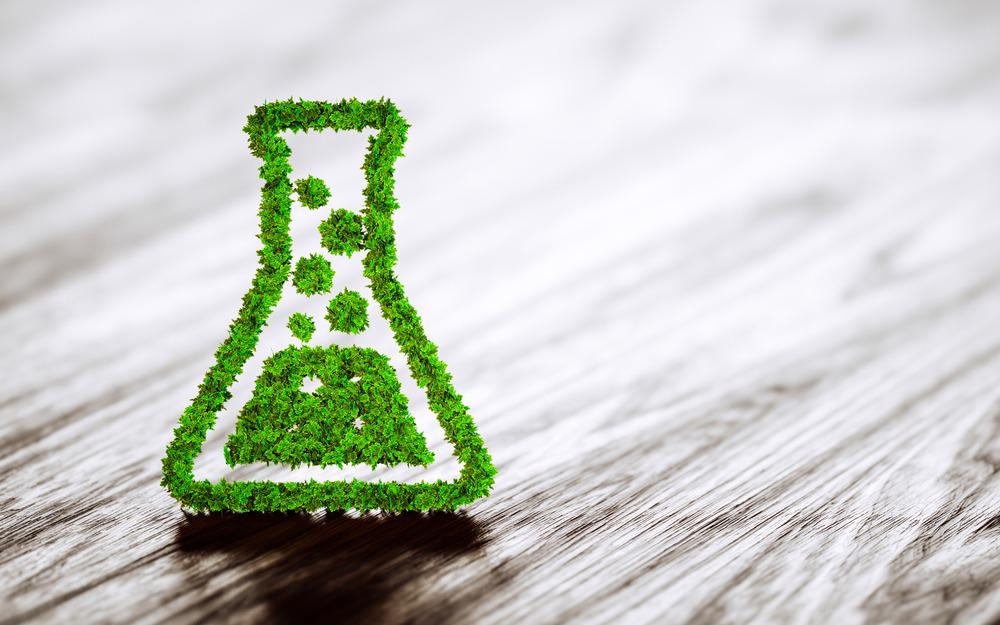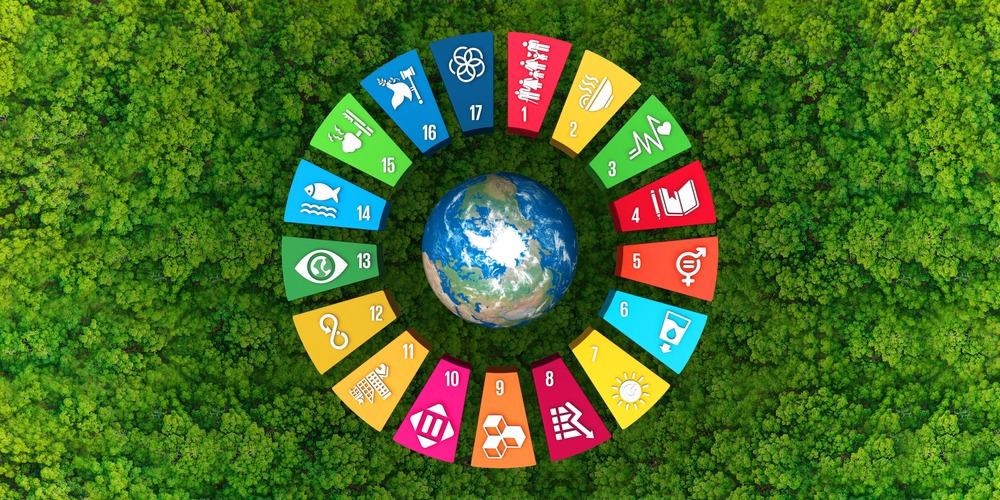To understand how “Green Chemistry” can help us reach our sustainability goals, we first need to understand “Green Chemistry.” “Green Chemistry” or “Sustainable Chemistry” was started around 1990 with objectives to minimize environmental impact, reduce consumption of non-renewable resources and prevent pollution. This approach was fostered by the US EPA (Environmental Protection Agency), which also funded research to use green chemistry to reduce pollution. The University of York in the UK established a Green Chemistry network and the RSC (Royal Society of Chemistry) launched a Green Chemical Journal.

Image Credit: petrmalinak/Shutterstock.com
“Green chemistry reduces pollution at its source by minimizing or eliminating the hazards of chemical feedstocks, reagents, solvents, and products. ... Remediation removes hazardous materials from the environment; conversely, green chemistry keeps the hazardous materials out of the environment in the first place”.
US EPA, 18 Dec 2020
Sustainability Goals
We also need to define sustainability goals. This definition cannot be black and white as there is much debate about what should be done. The commonly accepted perception is that we are depleting the World’s resources and creating an environment that will, at the very least, make life much more challenging to live for most if not all types of living organisms.
Not only are we depleting resources, but we are also converting what are relatively harmless substances into toxic and polluting substances, releasing them into the environment, which may cause a decline or elimination of various species. Many believe that we are currently on a catastrophic pathway that may lead to disaster for many if not all life forms on the planet. Green Chemistry may help us avert disaster by minimizing the effect of the chemical industry on the earth.
As we found out at the recent COP 26 conference, sustainability goals are hard to define precisely. But, most people will agree that they want to use resources in a way that does not irreversibly damage our natural environment. How we achieve these goals is the subject of continuous discussion internationally and locally.
Green Chemistry Goals
So let us look a bit further into “Green Chemistry” to see what it is and how it might help achieve these goals. Green chemistry is a multidisciplinary approach to improving the chemical industry’s environmental profile. The basic principles were defined by Paul Anastes (US EPA) and John C. Warner (Polaroid Company) in 1998 as;
- Prevention. It is always better, and probably easier, to prevent pollution than to clean it up. Hazardous Chemicals can be released into the environment intentionally (pesticides, herbicides, etc.) and unintentionally (factory emissions, agricultural runoff, etc.). Green Chemicals can help move toward a cleaner world, and the aim should be to eliminate all harmful releases of chemicals, thus ensuring a more sustainable future.
- Atom Economy. Synthetic processes should maximize the use of all materials involved in the final product so that no waste products are emitted from the process. This will minimize waste and make the process more sustainable.
- Use Non-Hazardous Chemical Synthesis. Always aim to avoid using or generating toxic substances in your process. You don’t need to worry about how to dispose of or contain these substances if you avoid them altogether in your process.
- Design Safer Chemicals. If the chemicals being manufactured and their by-products are not toxic, explosive, or flammable, you don’t need to worry so much about their effect on the environment. Aim to design chemicals that have benign characteristics to prevent these hazards.
- Use Safer Solvents and Auxiliaries. Don’t use hazardous or toxic solvents and auxiliary chemicals to manufacture or be part of your product. Then you don’t need to have strategies for disposal, handling, or treating these hazardous substances, which reduces the chances of release into the environment.
- Design Energy Efficient processes. If your process operates at ambient temperature and pressure, it will use less energy. It will also reduce the chances of accidental discharge of your product or any manufacturing process components. Less energy requirement means less depletion of energy resources, and if the energy required all come from renewable sources, it would massively improve sustainability.
- Use Renewable Feedstock. Avoid using feedstock derived from fossil fuels or other non-renewable sources. Ensure all ingredients and components can be renewed or recycled, not putting extra strain on resources and improving sustainability.
- Reduce Derivatives. Try to avoid processes that create derivative products that require disposal. If this is not possible, try to find a method that uses the derivative as a feedstock for another process to improve sustainability.
- Use Catalysis. Use catalytic reagents, which only require very small amounts of product to be used to achieve your goals. Catalytic material can often be reused or regenerated and are better than reagents that react stoichiometrically.
- Design for Degradation. Design products that will break down naturally in the environment into harmless substances that will not cause pollution or hazards. This will be more sustainable and avoid the need for effluent plants to treat any hazardous discharges, thus saving energy and resources.
- Carry out real-time pollution analysis. Monitor and control all hazardous and harmful products before they are released to the environment wherever possible. Modern monitoring technology is very sophisticated and adaptable, allowing real-time analysis of effluent streams to prevent the need for treatment or diversion of harmful discharges to air, water or land. This will help sustain the environment by preventing damage to it.
- Use Inherently safe processes. Processes that don’t create fire or explosion risks are less likely to cause accidents, which means employees, the general public, and the environment will be at less risk.

Image Credit: MintBlac/Shutterstock.com
Conclusion
If these principles are followed, we will have cleaner air, cleaner water, safer products, safer food, fewer accidents, and better human health in manufacturing areas. Green Chemistry is a multidisciplinary approach to raw materials, solvents, catalysis, synthesis, process efficiency, and energy efficiency. In many, if not all, cases will be synonymous with Good Manufacturing Practices. It aims for 100% atom efficiency, which will not always be possible, but using waste streams as feedstock for other processes will improve sustainability.
The real question should not be can Green Chemistry improve sustainability but “why are the chemical industry not already following Green Chemistry principles?”
Further Reading